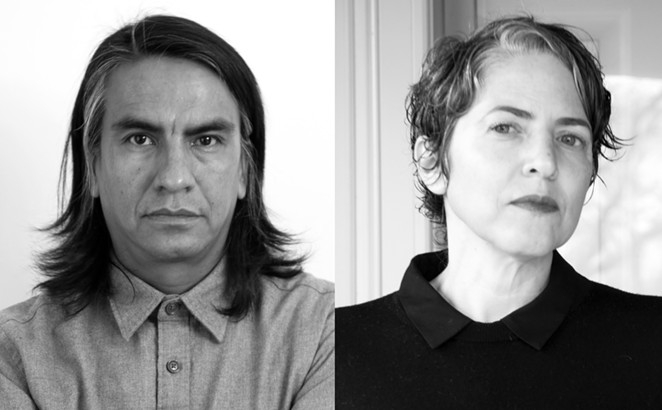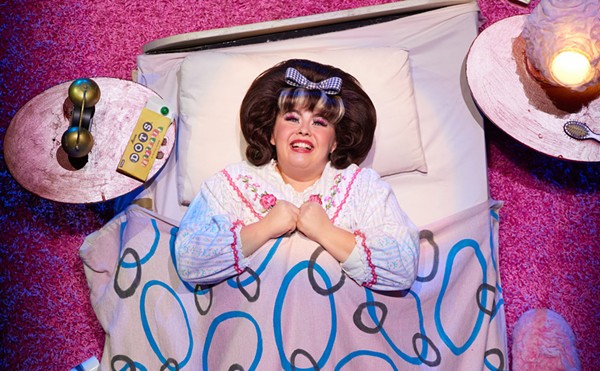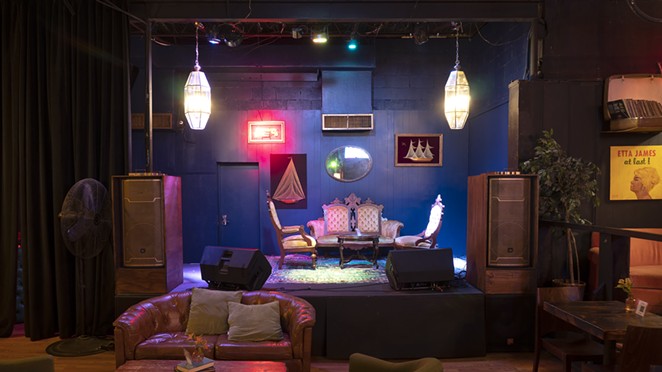
Within a few years of that chance meeting, Nevarez and Tevere — who hail from Mexico City and Chicago, respectively — were hanging out regularly and pursuing individual art careers. At the request of a curator, they collaborated for the first time in 2001. That meeting of the minds led them to form neuroTransmitter — an artistic partnership exploring communication, radio content and broadcast technology. After seven years of neuroTransmitter, they retired the moniker and began fine-tuning their focus on the intersections of music and contemporary art.
One of their earliest post-neuroTransmitter endeavors, 2008’s We need a theory to continue brought the pair to Austin, the self-proclaimed “Live Music Capital of the World.” Summed up as an exploration of “civic space, collective strategies, dissent and political theory,” the project entailed Nevarez and Tevere writing song lyrics that they gave to three dissimilar Austin bands to musically interpret. Held on an outdoor stage at Austin City Hall, the resulting concert was described by the artists as “an evening of live performative democracy in musical form.” During a recent Zoom conversation, Tevere recalled, “We wrote that song in the waning days of the Bush administration, but I think there’s still some relevance to it today.” In agreement, Nevarez added, “We still need a theory to continue — post-Trump.”
One could say that project set the stage for future works by Nevarez and Tevere, who embrace the spirit of collaboration, the fusion of disparate elements and the possibilities of public performance. Their ongoing series Another Protest Song: Karaoke with a Message seeks to turn outdoor karaoke stages into soapboxes where passersby can belt out songs such as the counterculture anthem “War (What Is It Good For?)” For their video piece Layers of the City, the pair penned a 23-minute cumulative song in response to rising rents and displacement in Santa Ana, California. “I think the lyrics could relate to any city that’s going through processes of gentrification,” Tevere suggested.
High-concept covers of new wave and post-punk songs are also something of a hallmark for Nevarez and Tevere. They’ve enlisted a mariachi troupe to perform Joy Division’s “Transmission” amid a public demonstration in Guadalajara’s Plaza de la Liberación; commissioned the Norwegian Radio Orchestra to revive Culture Club’s “The War Song”; and translated the lyrics to Siouxsie and the Banshees’ “Into the Light” into Morse code to be transmitted from a sailboat on the Charles River in Boston. They even started their own label, Textual Records, to release their musical experiments and other sound-based works by contemporary artists.
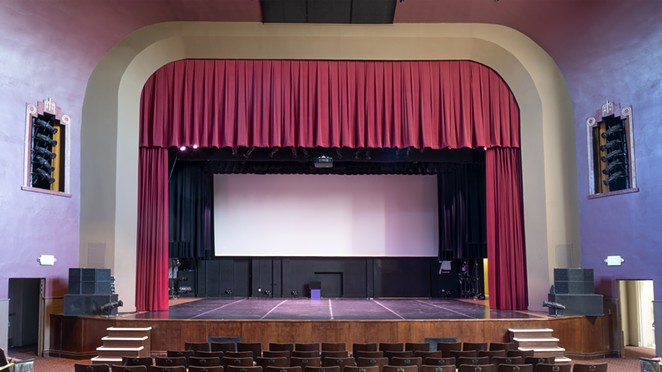
“We were thinking about all the spaces that we spend time in and aren’t able to access — cultural spaces, galleries, museums and music venues as well,” Tevere explained. “Because San Antonio is such a musically rich city, [we thought] this could be an interesting research to do while we were there.”
Citing previous work rooted in social spaces, Nevarez added, “We wanted to follow that up with a work that would reflect our engagement with society and culture to a certain degree. And of course, we had to reflect upon it with the scope of the pandemic and this idea of social space being closed at the moment.”
After consulting with San Antonio-based friends, conducting online research and driving around the city in the Artpace van, Nevarez and Tevere set out to photograph vacant stages at 20 venues — from joints along the St. Mary’s Strip (Paper Tiger, the Mix, Faust Tavern, the Lonesome Rose) to storied theaters and institutions (the Majestic, the Empire, the Alameda, the Carver, the Guadalupe) and points in between. Beyond capturing stages left dormant by the pandemic, Nevarez and Tevere sought to connect a diverse range of venues within the city limits. “We really wanted to build a bridge across the city through our photographs,” Nevarez said.
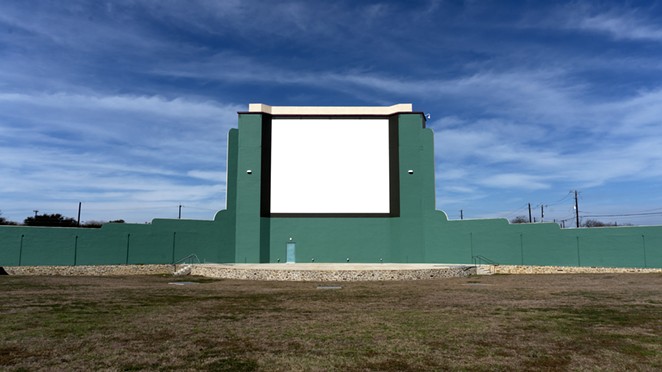
As for the 21st stage referenced in the exhibition title? It’s a circular stage Nevarez and Tevere erected in the center of the gallery. Although there are no plans for performances on it, gallery-goers are welcome to sit or stand on the stage.
When asked if singing is permissible, the couple replied that it’s “totally fine” so long as you wear a mask.

Stay on top of San Antonio news and views. Sign up for our Weekly Headlines Newsletter.

